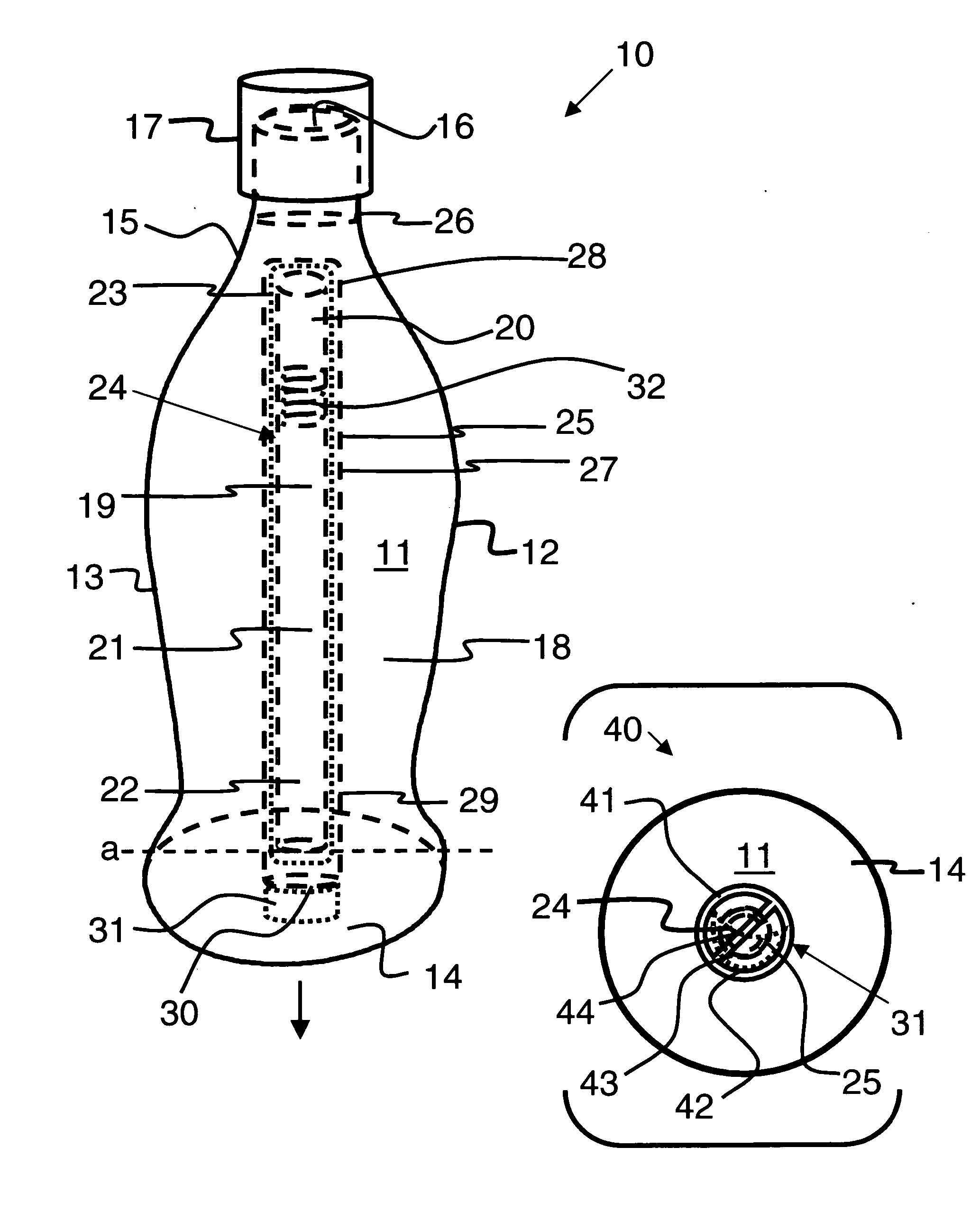As a result, the
consumer must purchase and / or carry a separate straw, which many times is not of the
proper length to accommodate the random beverage.
During drinking, the exterior drinking surface, or drinking lip, comes into intimate contact with the
consumer's mouth and lips, and the liquid passes over the contaminated area, thereby causing the consumer to ingest the germs and contaminants.
Contaminants and germs may result from human handling, or the accumulation of
dirt, dust, or debris on the exterior drinking surface of the can.
Moreover, germs may result during shipping and storage, as rodents may pass over the cans, exposing the end use consumers to germs and / or viruses.
Various types of beverage containers having straw devices therein are known in the art, but none of the known beverage containers provide a dual chamber configuration and an aseptic straw condition.
As time goes by, the straw has a tendency to break down, especially in corrosive beverages (i.e. soda, juices), yielding soluble and / or insoluble byproducts.
The soluble byproducts homogeneously mix with the liquid while the insoluble byproducts accumulate within the container, thereby contaminating the liquid, which is later consumed by the user.
The straw's
exposure to the beverage, especially corrosive beverages, can result in degradation over a period of time, causing leaching of the straw's formulation into the liquid to be consumed.
This provides a condition wherein the composition of the straw is susceptible to degradation over time, leaching into the liquid appointed for consumption.
The straw's substantial bottom portion is exposed to the beverage, which over time can cause degradation of the straw composition.
This, in turn, causes leaching of the straw's formulation into the liquid to be consumed.
As a result, the straw has a tendency to break down, especially in corrosive beverages, yielding soluble and / or insoluble byproducts.
The soluble byproducts homogeneously mix with the liquid, thereby contaminating the liquid which is later consumed by a customer.
As a result, the straw has a tendency to break down, especially in corrosive beverages, yielding soluble and / or insoluble byproducts.
The soluble byproducts homogeneously mix with the liquid, thereby contaminating the liquid, which is later consumed by the user.
The straw is not provided within a straw wrapper, and therefore fails to provide an optimal aseptic straw environment.
As a result, when the protective film is removed, the straw must be handled by the user to be removed from the groove, or readily pops out itself presenting a risk that the straw will fall to the ground or be otherwise contaminated.
Handling of the straw can readily result in the deposit of germs thereon, especially if the user is a child.
Moreover, after the straw is removed from the groove, the straw is immediately exposed to the environment and is therefore vulnerable to being contaminated if it is dropped or placed on a surface while the container is being opened.
These aforementioned beverage containers with straw devices fail to provide an aseptic straw environment, particularly when the straw is removed from the groove.
That is to say, none of these aforementioned beverage containers with straw devices provides for a straw that is externally housed and enclosed within a straw wrapper so that the straw is retained in an aseptic condition.
When the tab or covering disclosed by way of the aforementioned devices is removed, the straw is immediately exposed to the environment, and further requires manipulation by the user's hand to be removed from the groove, which can present an unsanitary condition, especially where the user is a child.
Moreover, the immediate
exposure to the environment increases the risk of
contamination, as the straw may be susceptible to falling out from the groove and landing on the floor or some other contaminated external surface.
 Login to View More
Login to View More  Login to View More
Login to View More 


